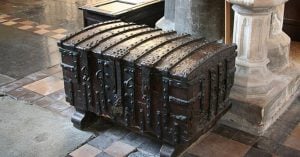With the popularity of TV shows such as "Who Do You Think You Are?" and "Finding Your Roots," a common question we receive as professional genealogists is "How long does it take to build a family tree?" You might have watched one of the many shows popular shows on TV where celebrities and individuals alike have learned their family history goes back many generations and hundreds of years in the short time frame of an hour. Surely this must be simple, right? They make it look so easy! Let's … [Read more...]
”How Do I Trace South American Ancestry?” Tips for Success
South American genealogy research can be tricky, and we frequently have clients who don’t know where to begin, or run into a brick wall. We asked Gerardo, one of our onsite researchers in Chile, to share some insights into tracing South American ancestry. Two of the main things to pay attention to when conducting genealogy research in South America are keeping track of the surnames one is searching for (so you don’t get derailed onto an unrelated line), and the history behind the scribes of … [Read more...]
Unlocking the Genealogical Treasure of the Parish Chest
Family historians with ancestry in England will almost certainly be familiar with Church of England parish registers. These registries of baptisms, marriages and burials provide the trunk on which most pre-1837 English family trees are built. Even after the 1837 implementation of civil registration, parish registers continued to be a significant source of useful genealogical information. What is less well-known, however, is that the Anglican parish created more than just baptism, marriage and … [Read more...]
Five Steps for Finding that Hard-to-Find Irish Ancestor
Researching Irish ancestry can be notoriously difficult. One of our genealogists shares her expert tips to trace your elusive Irish ancestors. *Case study shared with client permission. A client was looking to trace the ancestry of her Irish great-grandmother, Eliza Kennedy. Eliza was the wife of Thomas Morgan and they had several children, among them the client’s grandfather, Frank. Not much was known about Eliza; an aunt claimed that Eliza was from Cork and told stories about Eliza … [Read more...]
The Key Records You Need for Southern U.S. & Mid-Atlantic Genealogy
Some of the most difficult genealogical research problems filter down to us through the poor record keeping, burned depositories, and social customs of our ancestors who lived in the Mid-Atlantic and Southern United States. Notoriously challenging, many of the requests that we receive at Legacy Tree Genealogists are to assist others in discovering their Southern ancestors. In this blog post, we’ll discuss some of the key record types we use when solving a Southern State or Mid-Atlantic genealogy … [Read more...]
Tracing 20th Century Immigrant Ancestors
Do you have 20th century immigrant ancestors who came to the United States? If so, you’re in luck, as there are a variety of resources available to help you learn about their journey to the United States and where they came from. The biggest challenge in tracing the ancestry of immigrants is that you must first identify their exact hometown (not just country or region) before you can locate records in their home country. Luckily, there were a variety of records created when an immigrant came to … [Read more...]
Legacy Tree Onsite: Genealogy Research in Brazil
Legacy Tree Genealogists works with researchers from across the globe to access records for our clients. We asked Walter, onsite in Brazil, to share his experiences with genealogy research in Brazil. Genealogical research in Brazil can be an exciting undertaking. It generally involves traditional research of records, books, and other historical sources for general information, but then -- due to the scarcity of sources or inexistence of documents due to loss over time or lack of them ever … [Read more...]
Debunking Common Genealogical Myths
Doing genealogy often means piecing together scraps of information from various compiled family stories and documents to reconstruct our family history. Sound genealogical research demands that we, as researchers, place each fact into proper context and evaluate each piece in light of the whole picture. This valuable gathering of facts and supporting them through documentation can be side-railed if we allow common genealogical myths to dictate our research conclusions. myth … [Read more...]








